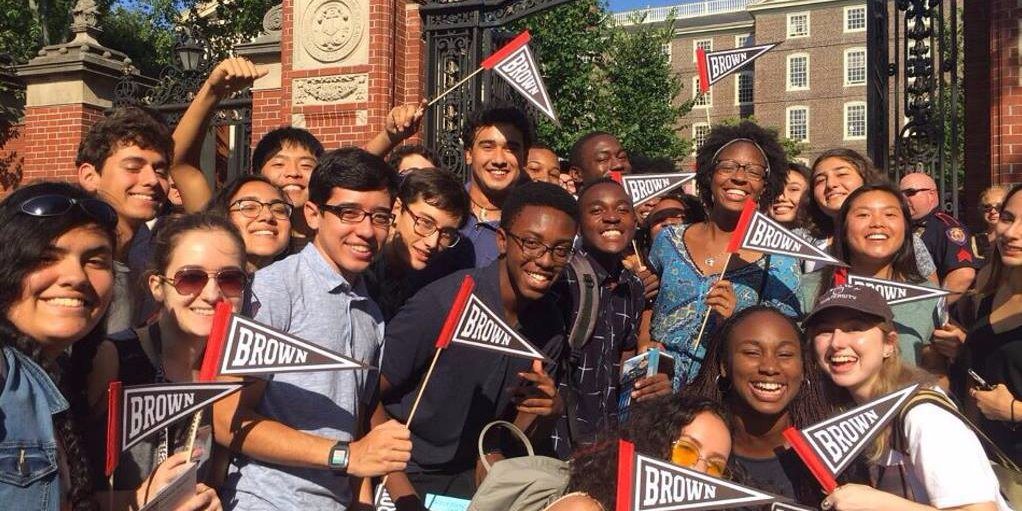Student loan debt has become a financial weight for the majority of college graduates, and it could become even heavier with the Trump administration’s plans to slash funding for Pell Grants. The recently announced budget proposal would reduce funding for the Department of Education’s largest expense by $3.9 billion, according to USA Today.
Brown University isn’t taking that news lying down though, and is taking its own steps to counteract that possibility.
The university recently announced that it will launch a $120 million campaign to drop all loans from financial aid packages awarded to undergraduates. The Ivy League school plans to replace financial aid packages with grants that graduates would not have to pay back. The initiative would apply to all undergraduates across the board — both domestic and international, confirmed University President Christina Paxson.
“If we’re successful in raising one quarter of the total amount — $30 million — by December, Brown will eliminate loans in financial aid awards for all current and incoming students starting with the 2018-19 academic year,” read a statement by Paxson.
Should Trump’s budget make it past Congress, students from low-income families could find paying for school even more difficult. The Pell Grant program sends up to $5,920 to students from families earning under $40,000 a year – though the program is prioritized for families earning closer to less than $20,000.
By adding $4.5 million to its financial aid budget each year specifically for grants, Brown University administrators say they will be able to help alleviate the financial part of the equation for undergraduates.
“Every year, as thousands of talented students receive offers of college admission and consider their options, decisions often come down to the math. How much will it cost? What level of debt will I incur? Can my family afford Brown?” Dean of Admission Logan Powell explains. “No student or family should be forced into the heartbreaking decision of whether to turn down admission because of the burden of loan debt.”

A National Problem
Since 2004, student loan debt has tripled and currently sits at $1.31 trillion. To put that in perspective, the average class of 2016 graduate has $37,172 in student loan debt – a six percent increase from graduates of 2015.
Among consumer debt in the United States, only mortgage debt is higher than student loan debt. And because it can take months for college graduates to secure steady jobs in their field, student loan debt also holds the title of carrying the highest delinquency rate among consumer borrowing.
The cuts to the Pell Grant aren’t the only bad news to come out of the Trump Administration’s budget proposal. The Federal Supplemental Educational Opportunity Grant program is getting the ax. The White House claims it’s not as well-targeted as the Pell Grant program, and its elimination is needed to “reduce complexity in financial student aid and save $732 million.”
The Federal Supplemental Educational Opportunity Grant program supplies up to $4,000 a year in financial aid to students.

Making Moves to Help Students
The move by Brown University marks a new step forward in broadening the scope of free tuition to a wider range of socioeconomic backgrounds. Other schools have previously made similar strides to make higher education more affordable to all. Earlier this spring, it was announced that New York state would make tuition free for its residents with an annual income below $100k at both community colleges and public four-year schools.
The University of Michigan has also announced that in-state students with a family income under $65k will be eligible for up to four years of free tuition at the university. Springs College and College of the Ozarks are two of the few American schools that offer free tuition to all in-state students, regardless of annual household income.

Planting the Seeds of Change
The financial initiative by Brown has been in the works for years, starting in 2003 when the university rolled out a “need-blind admission policy.” This eliminated the consideration of an applicant’s ability to pay tuition from Brown’s undergraduate admission process. The next step to making the school more affordable came in 2008, when the university eliminated parent contributions for families with incomes under $60,000, replacing the loans with scholarships from families with incomes below $100,000.
These financial steps to make attending the university more affordable to those on the lower rung of the socioeconomic ladder have thus far proven successful. Attendance of undergraduates from families with incomes under $60,000 rose by more than 200 percent over a 10-year span.
Working to make the campus more well-rounded with students from various economic backgrounds is “essential,” according to Paxson. “The conversations and debates that occur in classrooms and dorm rooms are enriched when students represent a full range of experiences, perspectives and ideas,” Paxson added.
Now we just need the other 4,200 U.S. colleges and universities in the U.S. to follow suit, before any more financial aid goes out the window.

